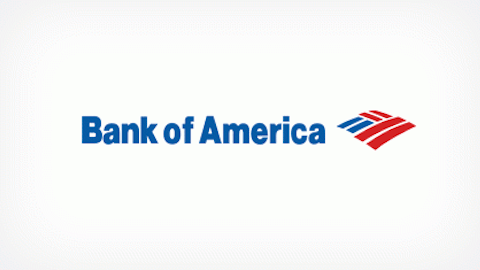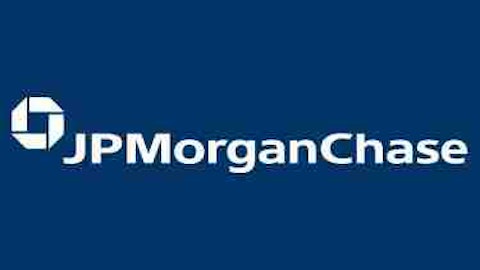Rising interest rates bring glad tidings for banks. As rates rise, they can start making loans with higher returns. Assuming they can keep funding costs from rising too quickly, that could garner them better interest rate spreads, which is still the way most banks make most of their money.
Bank of America Corp (NYSE:BAC)‘s CEO Brian Moynihan recently highlighted that his bank would see a nice revenue bump from higher rates:
If you look at our disclosure on a 100 basis point parallel rise, you’d see a $3.5 billion to $4 billion of revenue impact. So that will help.
I can’t think of too many circumstances when an extra $4 billion wouldn’t help.
Other banks provide similar disclosures in their SEC filings. Wells Fargo & Co (NYSE:WFC) , for instance, calls the “most likely” scenario over the next 24 months one where the Federal Reserve’s Fed Funds rate stays at 0.25%, and 10-year Treasury yields climb to 2.98%. But if the Fed Funds rate and Treasuries rise more — to 1.25% and 3.98%, respectively — the bank estimates its earnings could be as much as 5% higher than that “most likely” scenario.
The problem is, while it’s easy to focus on the impact to bank revenue, there’s a simultaneous threat to banking balance sheets. As an article in Financial Times noted:
US banks have given back billions in dollars in gains on their securities portfolios during the bond market rout of recent months, Federal Reserve data shows.
Specifically, Fed data on “net unrealized gains” on available-for-sale securities — that is, the profits on trading securities that the banks haven’t cashed in yet — shows a precipitous drop. In April, unrealized gains stood at $36 billion. For the week ending June 5, it was $18 billion. It seems little coincidence that this happened as Treasury rates were climbing.
We don’t want to read more into this than what’s actually there. The disappearance of unrealized gains could mean that lots of banks are anticipating a higher-rate environment, selling some of their security portfolios and realizing the profits. But a lot of that is likely coming via losses in the portfolio — remember, in the bond market, higher rates mean lower prices.
With earnings season fast approaching, investors should get to see whether this has become a pain point for banks. The Fed’s data show a $15 billion drop in unrealized gains since March. According to the FDIC, total bank profits for the first quarter were around $40 billion. So we’re talking significant numbers here.
Longer term, higher rates should be — as the bank CEOs contend — better for the banks. But that doesn’t mean the shorter-term rate-transition period will be without hiccups and dislocations — like losses on the balance sheet. This may agitate some investors. But for patient investors with their eyes on well-run banks, it could also mean opportunity.
Is Wells Fargo a buy?
Wells Fargo & Co (NYSE:WFC)’s dedication to solid, conservative banking helped it vastly outperform its peers during the financial meltdown. Today, Wells is the same great bank as ever, but with its stock trading at a premium to the rest of the industry, is there still room to buy, or is it time to cash in your gains?
The article There May Be a Leak in Banks’ Balance Sheets originally appeared on Fool.com.
Matt Koppenheffer owns shares of Bank of America Corp (NYSE:BAC). The Motley Fool recommends Bank of America and Wells Fargo & Co (NYSE:WFC). The Motley Fool owns shares of Bank of America Corp (NYSE:BAC) and Wells Fargo & Co (NYSE:WFC).
Copyright © 1995 – 2013 The Motley Fool, LLC. All rights reserved. The Motley Fool has a disclosure policy.




